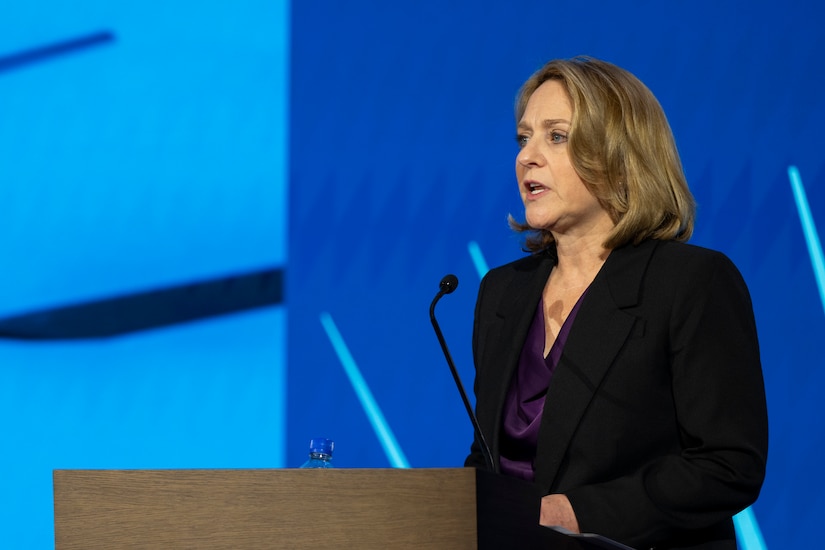NATO Secretary General Jens Stoltenberg, Deputy Defense Secretary Kathleen Hicks and National Security Advisor Jake Sullivan spoke at the event, sponsored by the U.S. Chamber of Commerce, before opening ceremonies of the NATO summit in Washington, marking 75 years of the alliance.
Hicks said Russia’s war on Ukraine “revealed how nation-state aggression is a real threat, requiring information-age ingenuity and industrial-era capacity.”
Russian President Vladimir Putin has put Russia’s economy on a war footing. “He’s preparing for the long haul, even reassessing Russia’s nuclear doctrine,” Hicks said. “And he wants to buy, beg or borrow whatever capabilities he can from his ad hoc arsenal of autocracies, even if endemic corruption should make their quality suspect and even in violation of U.N. sanctions.”
Putin has reached out to leaders in North Korea, Iran and China for help, she said.
This is against the 32-member NATO alliance, which is truly an integrated organization. NATO service members train together, exercise together, and operate together, Hicks said.
“We trust each other to defend each other,” she said. “And we uphold our pledge to fight together, sweat together, bleed together, and make the ultimate sacrifice — together. Indeed, the United States will never forget how NATO allies did so alongside us after 9/11 because we know Article 5 is ironclad for all of us.”
NATO nations also buy military capabilities together, Hicks said. The nations recognize that the collective defense industrial base is a force multiplier. “It makes us more formidable than any adversaries we might face,” she said. “Our competitors can only dream of that. So, I know we have what it takes — not just to compete, but to outcompete and prevail.”
Stoltenberg said he sees that, too. He said he anticipates a pledge coming out of the Washington Summit “to help to make our industry across Europe or North America stronger, more innovative and capable of producing at scale,” he said.
The first element of this occurred when the allies agreed at the Wales summit in 2014 that each nation would strive for a goal of spending 2% of gross domestic product on defense. At that time, only three NATO nations hit that goal. Today, that number is 23, and they are seeing the 2% as a floor for their defense expenditures, not a ceiling, Stoltenberg said.
“The other main element is that we have to spend better by spending more together,” the secretary general said. “That’s partly to ensure that we are able to actually sign the big contracts for the long term, … to ensure that we are able to utilize the economies of scale working together with the defense industry.”
He specifically pointed to the F-35 joint strike fighter as an example of this. “The F-35 fighter jets are manufactured in [the] United States, of course, but also in Belgium, Canada, Denmark, Germany, Greece, Italy, Finland, the Netherlands, Norway, and United Kingdom,” he said. “So, it’s actually something we do very much together as allies.”
Sullivan said that Russia is the main threat, but certainly not the only disturber of the peace. “Today, we face challenges from all directions and all domains, from terrorists to tyrants to technology and beyond,” he said. “The alliance has been prepared to handle all of these threats at the same time.”
NATO has moved to address all these problems. “We’ve worked to modernize NATO structure in the last three years,” he said.
He called the fact that the alliance has developed regionally focused plans “a huge shift,” which means NATO “will have the forces and weapons it needs to confront threats from any direction or even multiple directions at once.”
The alliance has streamlined command and control capabilities, ensuring NATO can rapidly shift to war footing, and allied forces will know from the first moment who they take orders from, he said. “All this is about readiness,” he said.
Hicks harkened back to President Franklin Roosevelt’s pledge before World War II that the United States must become “the arsenal of democracy” in a troubled world. “Those days are long over,” she said. “Today’s arsenal of democracy is not only American. It’s not only Western, either. Today’s arsenal of democracy is global. It’s a testament to what we’ve built over the last 75 years. And it benefits us all.”









